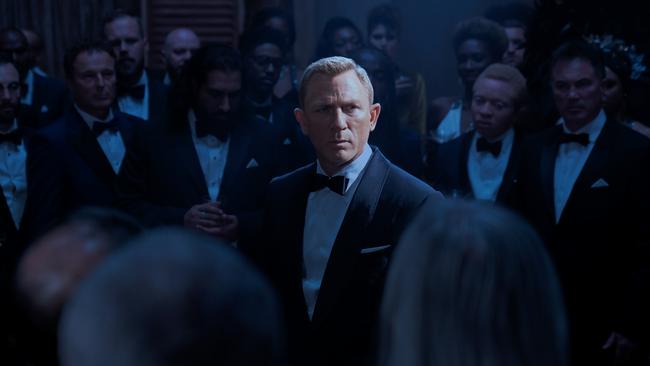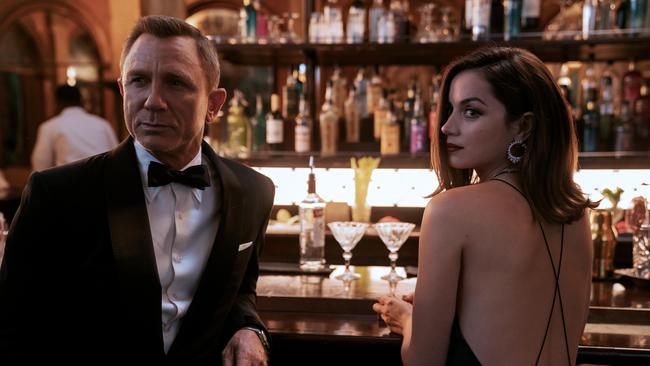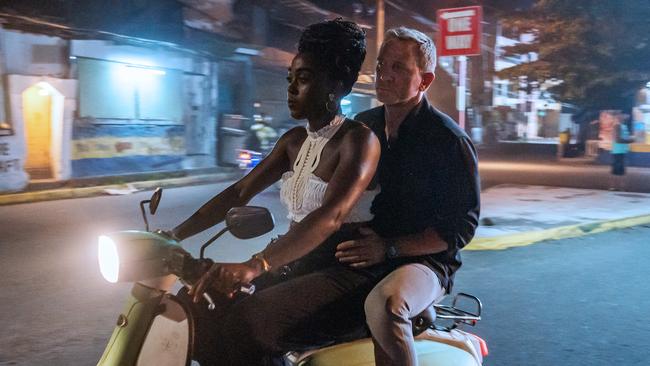No Time To Die review: Thrilling but inconsistent emotional end to Daniel Craig’s Bond journey
If there’s one thing that’s marked Daniel Craig’s Bond movies is that it’s been inconsistent. The final one may be the most of all.
Movies
Don't miss out on the headlines from Movies. Followed categories will be added to My News.
If there’s one consistency in the Daniel Craig James Bond era, it’s inconsistency.
From the franchise high of Casino Royale to the witless Blofeld introduction in Spectre, the Craig era has disappointed as much as it has thrilled.
But in an almost-60-year-old franchise with now 25 entries, there’s bound to be some missteps, and at least none of the Craig movies featured a glowing dream machine or a lovesick Jaws.
The more striking consistency about the Craig era is a commitment to Bond’s emotional arc, suggesting that not only does the British super spy have a heart, but that the pain he experienced in one movie actually marks him in the next.
So, it’s fitting that No Time To Die, Craig’s fifth and final outing, is a mix of both these distinctions, the emotional connection audiences have to a Bond that dared to feel, while frustrated at certain story and character choices.
No Time To Die is, on balance, a kinetic, expansive and stirring capstone to Craig’s adventures in those perfectly tailored Tom Ford suits.

It’s a quirk of this particular Bond epoch that they actually require you to have seen the everything since Casino Royale (except maybe Quantum of Solace) to make full sense of No Time To Die – you could dip in, but you’d have a lot of questions.
But that does mean that a lot of the character beats in No Time To Die lands better – a punchier ending to Craig’s 15-year tenure than any of his predecessors got – than if the franchise continued its laissez-faire attitude to Bond’s emotional state.
And his emotional state is at the heart of everything in No Time To Die, a film that picks up not long after the ending of Spectre, with he and Madeleine Swann (Lea Seydoux) driving off in his Aston Martin DB5 and winding along the coast of southern Italy.
Bond fans who appreciate the unfairly maligned On Her Majesty’s Secret Service will immediately pick up a line of dialogue Bond says to Madeleine, “We have all the time in the world”.

That direct connection between OHMSS – the only pre-Craig movie in which Bond actually falls in love – and No Time To Die foreshadows the world the film swims in, one in which Bond is not a super spy but a fallible human that has been broken, whose vulnerabilities are numerous.
Craig has the range and skill to pull it off, and he’s more present here than in Spectre.
But the weakness of No Time To Die and Spectre is that Craig and Seydoux’s chemistry doesn’t spark, and it’s a risk hanging the film’s emotional centre on a pairing whose grand romance you can’t buy into.
Part of that is since Casino Royale, the Bond movies have tried to recreate the crackling chemistry between Craig and Eva Green whose first tete-a-tete on the train to Montenegro is more sexual than anything in 25 Bond movies – and no one even took their clothes off.
Compared to that, it’s hard to invest in the ones that came after (though Monica Belluci came close in Spectre), no matter how smouldering the eye contact is.
Albeit Craig’s reunion with Knives Out co-star Ana de Armas in a Cuba-set sequence is the film’s most fun and that’s largely down to their collective charm. It’s not necessarily a sexual energy but they certainly, at least, feel like equals in the scene.

No Time To Die’s plot is nothing too exciting, a typical Bond/Mission Impossible/Fast & Furious contrivance, in which the villainous Safin (Rami Malek) is threatening the world with a weapon so fearsome that the only option is to stop him.
Safin is a ludicrous villain whose main characteristic seems to be whispering with menace. He professes a personal motivation, but the script decides midway through the film to pivot that to genocide.
Malek has displayed so much intensity in previous roles including in Mr Robot, but none of that is on show here.
Usually in these types of movies, there’s a device or file that serves as the MacGuffin to motivate the characters and move the story along and in No Time To Die, that’s Safin, whose presence barely registers as anything more than how to get Bond to the next scene.
Most of Bond’s previous collaborators including Ralph Fiennes, Naomie Harris, Rory Kinnear, Ben Whishaw and Jeffrey Wright are under-utilised but Lashana Lynch’s new agent sizzles and optimistically points to where the franchise could go next.

Director Cary Fukunaga handles the requisite action sequences with panache and dynamism, which is immensely helpful for a movie that clocks in at two hours and 40 minutes, because you don’t really feel the long runtime.
Bond isn’t known as a franchise that’s cultivated high-profile filmmakers given no director’s reputation will ever supersede Bond’s brand, and while Fukunaga mostly functions as the current steward in a larger machine, there are instances in which certain shots in No Time To Die look like they have the aesthetic mark of the American filmmaker’s visual style.
If anything, what Fukunaga and screenwriters Neal Pervis, Robert Wade and Phoebe Waller-Bridge (Fukunaga also has a “story by” credit) have managed is to really keep fidelity with Bond’s emotional arc. It’s the strength of the series.
Even if you don’t buy into Bond and Madeleine’s endgame romance, you do buy into Bond’s journey – and it’s one you’ll want to see out with Craig as the grittiest, most grounded and most exposed Bond in 59 years.
You may even get a little emotional.
Rating: 3.5/5
No Time To Die is in cinemas on Thursday, November 11
Share your movies and TV obsessions | @wenleima
Originally published as No Time To Die review: Thrilling but inconsistent emotional end to Daniel Craig’s Bond journey





